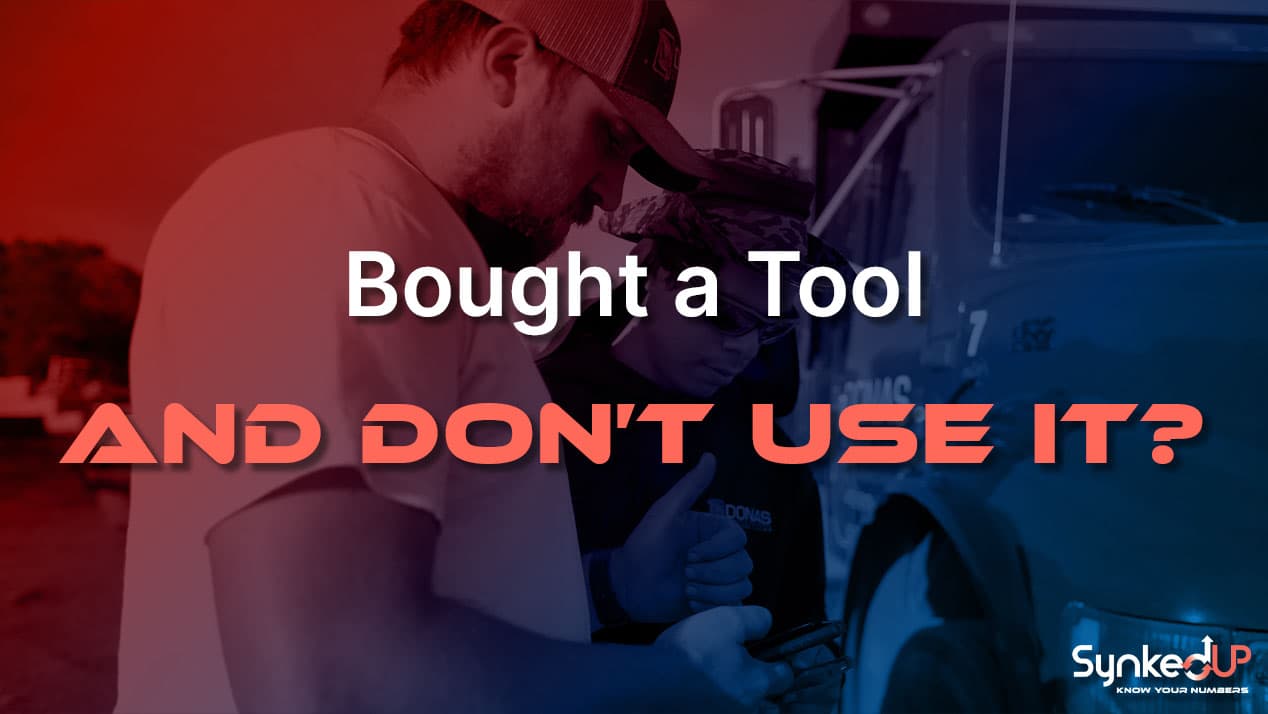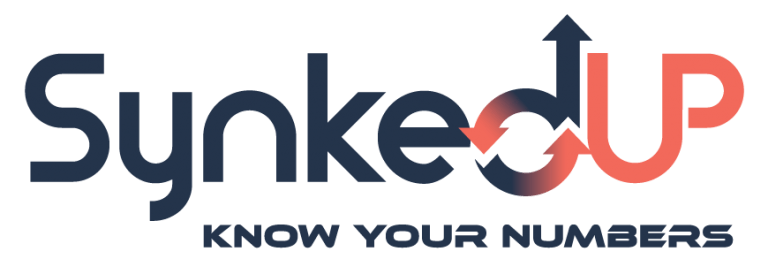Bought a Tool and Don’t Use It?

You bought a new tool
You wanted to get faster and more efficient at your jobs, so you followed the latest rage and bought a new tool – like a tilt rotator.
Then the first hour you run the thing, you feel like you are all left-handed and all thumbs, and wonder for a brief moment if you’ll ever figure this thing out.
In fact, sometimes you just stop using it for a moment, because it’s “faster” and you’re more “familiar” with the old way.
But then eventually, after hours of running it, it suddenly seems to click, your muscle memory is taking shape, and it actually IS faster and more effective.
I use that analogy because it was easy. One that you’ll understand instantly.
That’s the thing with a new tool. The easy part is buying it. The hard part is disciplining yourself (or your team) to use it.
Nothing is worse than buying a tool that no one ends up using.
The tricky part is in the beginning, it DOES seem “not worth it” to use the new, complicated tool. It’s often faster than the “old way”.
Software can be a new tool
Software is no different. It’s a tool to help you:
- prevent mistakes
- be more accurate
- be more effective, in less time
- reduce friction in your process
- reduce dependencies on your key people
Here’s the thing though… The easy part is looking at the testimonials and saying “Yeah I want that outcome or benefit for my business”.
The hard part is disciplining yourself to use that new tool.
Because at the end of the day, what you’re really doing is changing habits. And you don’t have to know very much about humanity to know that changing habits is hard. (Ever tried to change your lifestyle around diet or physical fitness? 😬)
So hard in fact, that many people will (consciously or unconsciously) opt to stay right where they’re at, to not grow or evolve, so they don’t have to go through the temporary pain of changing habits.
Transitional pain
A friend of mine recently coined this phenomenon as “transitional pain”. I think he’s right.
I see it regularly in the SynkedUP business.
Someone will hear about us on Instagram let’s say, they want all the benefits they hear about of being more confident in their numbers, they want to track their jobs and know when they made money or not.
So after fighting a bit of a mental battle on paying for software to solve this problem, they whip out the credit card and sign up.
They think that: Yay! The hard part is done. They committed.
…except that isn’t the case.
Whipping out the credit card to sign up is the easy part.
The hard part is now changing your habits to adopt and implement these new processes into your business, your estimating, the way you schedule, and the way you track time and materials on jobs aka use that new tool!
Here’s a fact: you WILL be tempted to fall back into your old ways of estimating, tracking, etc.
It’s easier!
It’s what you know. It’s what your team knows.
Don’t be tempted to abort
But I can tell you from experience, if you mentally prep yourself for a temporary disruption to your process, push through that brick wall of unfamiliarity, and become comfortable with new processes, the results you unlock on the other side of that brick wall of changing habits are massive.
You will actually get what you came for.
But if you abort the mission, that’s got to be the worst-case scenario.
You paid for it, and you disrupted your process, but when the going got hard and uncomfortable, you punt and go back to your old ways.
And back there in your old ways are the same problems that had motivated you to “do something about it” in the first place.
If you abort, basically you are telling yourself that “do something about it” just looked a little too hard.
Do you know what I’m talking about?
The old way seems easier
I have a friend and customer that pretty much lived that exact story out in their business.
They knew they needed something like what we do at SynkedUP for their business. They did a demo and signed up. Then throughout the implementation, they encountered that “transitional pain”.
For instance, they were used to just not really tracking their time on jobs at all. And it felt unnecessarily “over the top” to clock in and out on every single job.
Like, do you REALLY need to go to that level? I already know how many hours I work in my head…
Well… to job cost, you need to know your actual time and material, yes?
Yes.
And in the beginning, when your business is smaller, yes you DO know a lot of info right off the top of your head, yes?
Yes.
But you would like it if this business could someday run without you, yes?
Yes.
This means we have to do “brain surgery” and get all our knowledge out of our heads, and into systems and processes that others can run without us, yes?
Well…. umm… Yes…..
And yes, it would be easier at this very moment, to just do it the old way.
But if you punt, and say to yourself that “this isn’t worth it”, and go back to the old and familiar ways, then you WILL encounter the exact same problems you had been running up against that were motivating you to find a better way in the first place.
Problems like:
- You as the owner are the only one that can produce an estimate. No one else knows your method.
- You don’t actually know when you make money or not on a job, whether your estimate was wrong or right.
So you revert back to using your checking account balance as a barometer as to the health of your business.
Which any accountant or anyone that has been in business for a few years will tell you, that’s dangerous territory.
What do you want?
So, as I was on this phone call with my friend, I asked him, what do you want for yourself and your business?
It’s as simple as that.
If you’re ok with all the business info and processes being firmly rooted in your own head, making it impossible to delegate, then that’s an option. It’s a choice you could make.
Or if you want the business to grow beyond just you, and you want to own a business, not a job, then you’re going to need to do the work of adopting systems and processes into your business.
And yes, that work is often hard.
Staying stuck where you’re at is hard too.
So… which version of “hard” do you want for yourself and your business?
In life, there is no “it’ll get easier”. We just get better at doing “hard”.
Digressing a bit, I’ve often thought to myself, hmmm…. We are not in the software business, we are in the business of changing human behavior. Ha Ha. Maybe a little off base, but there’s an element of truth to it.
Conclusion
Before signing off, I just want to say this: If you are like my friend, fighting the internal battle of “Is this work of implementing software “worth it”, reach out to me. I’m here to help you. I’m more than happy to hear about your situation and help you think through and process what the right path is for you to help you achieve the outcomes you want.
I just gave a few generalized examples. It’s not always black and white or as simple as a blog article makes it sound. Let’s talk about your situation and work to find what your solution for an ideal outcome would look like.
Hit me up in the replies, comments, Instagram DMs, wherever.
Cheers!

Weston Zimmerman
CEO and co-founder

This is me. Right now. Thanks for the motivation to push me over the edge.
Absolutely Jeff. It never gets easier. You just get better at handling hard. Shoot me a DM on Instagram @synkedup if I can help in anyway. I’m here to provide support.
-Weston